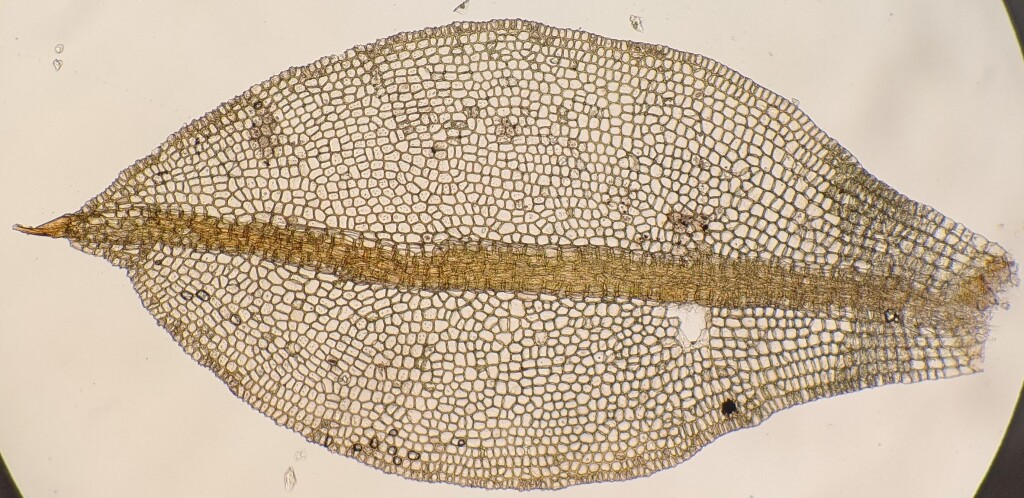Chenia
Dioicous. Asexual reproduction by rhizoidal tubers or caducous leaves. Turves on soil. Stem simple or rarely branched, with sparse rhizoids; central strand present; sclerodermis present or absent (not in Victoria); hyalodermis absent. Leaves elliptic or ligulate to spathulate, erect- to wide-spreading when moist, appressed and contorted when dry; apex rounded (not in Victoria) to acute, occasionally apiculate; costa subpercurrent or percurrent, with quadrate to short-rectangular adaxial superficial cells, with a differentiated adaxial epidermis, without an adaxial stereid band, with a hydroid strand, with a weak abaxial stereid band (not in Victoria) or without an abaxial stereid band, with a differentiated abaxial epidermis, with quadrate to short-rectangular abaxial superficial cells; margin denticulate or dentate (not in Victoria) near apex, plane or weakly recurved near base (not in Victoria), without a border; laminal cells in apical half hexagonal or quadrate, smooth or pluripapillose (not in Victoria), with red KOH reaction; basal laminal cells differentiated equidistant from costa to near margin, quadrate to rectangular, smooth. Acrocarpous. Capsule erect, straight, globose, ovoid or cylindric (not in Victoria), immersed or exserted (not in Victoria), operculate (not in Victoria) or cleistocarpous, with an annulus. Calyptra mitriform or cucullate. Operculum conic. Peristome absent or of 32 straight or weakly twisted filaments (not in Victoria).
Five species shared between temperate to tropical regions (Kou & Feng 2018); one species in Victoria.
The Victorian species, Chenia leptophylla (Müll.Hal.) R.H.Zander, is unique in the genus for having a cleistocarpous capsule and this distinction is the primary basis for Guerra & Cano (2000) elevating it to its own monotypic genus, Leptophascum. However, Hedderson & Zander (2008) retained this species in Chenia because sporophytic reduction from operculate to immersed cleistocarpous capsules is a common trend among moss genera, including those in the Pottiaceae.
 Spinning
SpinningGuerra, J; Cano, M.J. (2000). A taxonomic contribution on the European cleistocarpous species of Pottiaceae (Musci). Journal of Bryology 22: 91–97.
Hedderson, T.A.; Zander, R.H. (2008). Chenia ruigtevleia (Pottiaceae), a new moss species from the Western Cape Province of South Africa. The Bryologist 111: 496–500.
Kou, J.; Feng, C. (2018). Chenia zanderi C.Feng & J.Kou (Pottiaceae, Muci), a new species from Yunnan, China. Journal of Bryology 40: 39–44.

